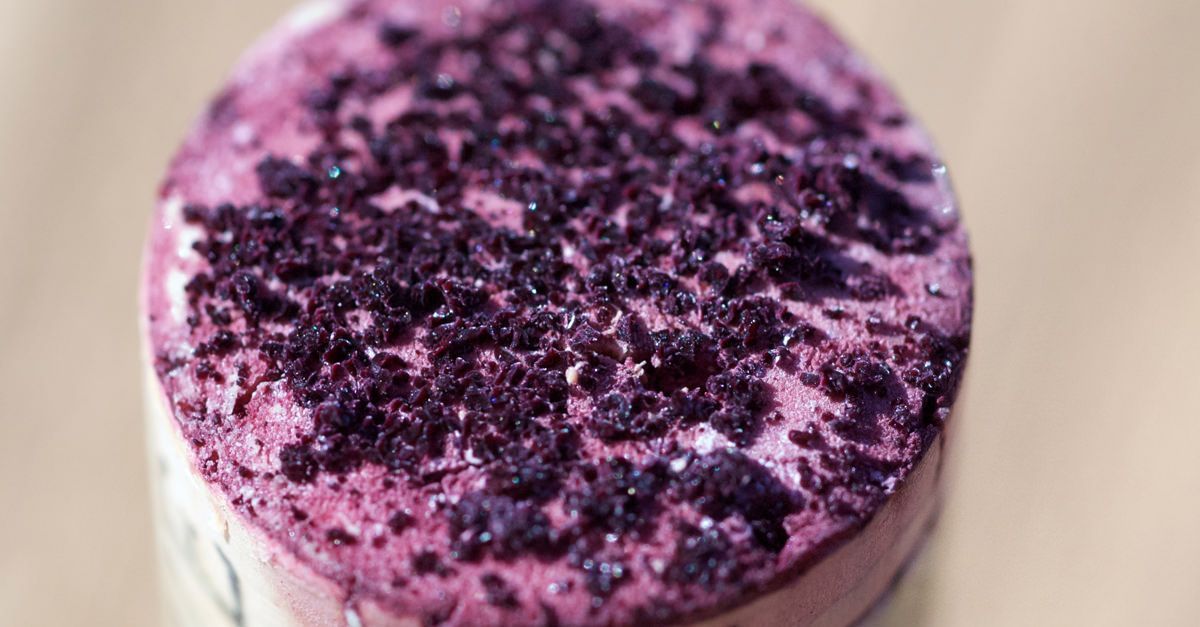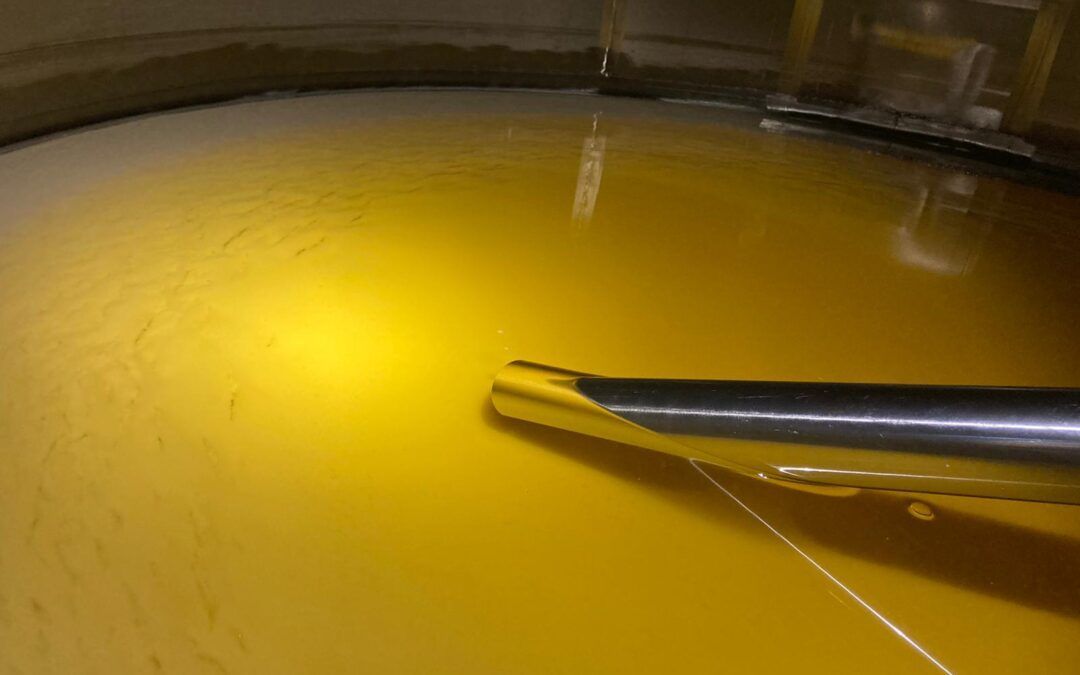
Precipitates and turbidity in wines
Written on 27/01/2023 by CASTELL D’ENCUS
We must start by saying that a solution is a homogeneous mixture at molecular level of 2 or more pure substances that do not react with each other. In this sense, the components (solutes) of this mixture could not be separated either by centrifugation or by filtration. On the other hand, it is necessary to introduce the concept of colloid understood as a heterogeneous mixture in which the particles are found together in an irregular way in a solvent, but have not managed to dilute.
Wine is a very complex mixture of substances, some of them come from grapes and others are generated during the manufacturing process. This process begins with fermentation, continues during the different tasks that take place in the cellar and ends in the bottle. Contrary to a perfect dissolution (a perfect non-separable mixture), in the wine we find quite a few solutes in colloidal form and also with a continuous evolution with different reactions such as polymerization, esterification, etc., which originate unstable molecules in the wine.
The main families of compounds found in this hydroalcoholic mixture that is wine are: sugars, acids, alcohols, aldehydes and ketones, esters, nitrogenous compounds, phenols of different types, and inorganic compounds.
The most common precipitates found in wine are tartaric, protein and colloidal precipitates.
Tartaric precipitates
Tartaric instability is the most common one, and it occurs in the form of potassium bitartrate crystals and, to a lesser extent, calcium tartrate. The wine has a high concentration of tartaric acid and, depending on the pH, it presents different concentrations of bitartrate and tartrate anions. Bitartrates have reduced solubility with potassium salts and with the calcium cation in the tartrate form. The formation of these crystals depends on the concentration of anions and cations and on the temperature. The rate of crystallization in the formation of the crystals also has its effect on the subsequent stability.
It is also worth mentioning that the ethanol concentration plays an important role in the solubility of these salts, so that a higher alcohol concentration favours precipitation. The solubility curves indicate that at a lower temperature there is a decrease in solubility and they are approximately adjusted to the equilibrium. Let’s keep in mind that in a mixture as rich as wine, the concentrations are always complex and can never be simplified into mere curves of the corresponding monosalts.
The precipitates are never pure, and there is interaction with phenols and colloids.
There are different options to reduce crystalline precipitates, such as lowering the temperature, seeding the tank with microcrystals and lowering the temperature, exchange resins, osmosis filtration, etc. One option for aging wines is to wait for natural precipitation.
We would like to add, and this is important, that the crystalline presence on the bottom, on the shoulder or on the cork of the bottle does not present any organoleptic problem. We are dealing with a purely visual effect that, depending on the factors and parameters mentioned above, may also be related to the moment in which the bottling was carried out.

As for the proteins, it is necessary to consider the solubility, the pH and the isoelectric point of each of them. It must be understood that proteins act as cations at low pH and anions at high pH. The isoelectric point is that at a given pH it has no global charge. At this isoelectric point the proteins have the minimum solubility. An increase in pH may have a certain correlation with the instability of the wine.
And it would also be necessary to specify that the effectiveness of the clarifications (for example with bentonite) depends on the pH. Bentonite is a clay used as a clarifying agent in wine (it is one of the few non-allergenic clarifying agents). Its negative charge causes it to bind to proteins with a positive charge and thus, they precipitate, although it is not a pure phenomenon.
We used to say that crystalline precipitations do not present sensory problems. Here, though, and due to the fact that certain proteins in the wine include organosulfur substances, the wine can present reduction reactions giving place to compounds with a very low threshold of perception (mercaptans) that may produce unpleasant odors.

Colloids are partially soluble compounds, and this solubility depends on the temperature, the polarity of the solvent and the corresponding solubility products. They can be made up of different types of particles, often relatively large in size.
We find protein-type colloids with molecular weights between 10,000 and 60,000 daltons, polysaccharides, between 100,000 and 500,000 daltons, and other more complex products. Colloids can be in a state of supersaturation (unstable state) before they precipitate. The generic nature of the positive charge of proteins and the negative charge of polysaccharides can give rise to bonds between these partially soluble compounds. The final result in terms of solubility is complex, since it can suddenly increase and suddenly be lower depending on the components. It is worth remembering that polysaccharides in wine are found in concentrations between 300 and 1000 ml/l, and originate from both the grape and fermentation microorganisms.
As for the grape, much of the polysaccharides include pectins. We also find polysaccharides with galactose, arabinose, rhammosa and glucose, as well as by-products derived from grape rot (beta-glucans) with very high molecular weights.
Regarding fermentation microorganisms (yeasts and bacteria): sacharomyces have high levels of mannose and release 350 mg per liter of polysaccharides. Different yeasts can give quite varied concentrations. There is also a release of beta-glucans by lactic acid bacteria when we age on lees, creating a mixture of polysaccharides and proteins (glycoproteins). These colloids can inhibit the creation of potassium bitartrate crystals.
Finally, the mixture of phenolic polymers with grape proteins enters here. At this point, precipitates appear as a function of molecular weight. For example: phenol dimers and certain small peptides are responsible for instability in many wines.
In summary, it is important to understand that crystalline precipitates do not have any harmful effect on the wine, they are not a problem. Those from proteins, however, can cause reduction aromas in wines. The precipitation of coloring matter is not something negative for wine. Phenols, anthocyanins and aldehydes form complex compounds that have a limited stability over time, and ultimately end up precipitating.
Written on 27/01/2023 by CASTELL D’ENCUS


